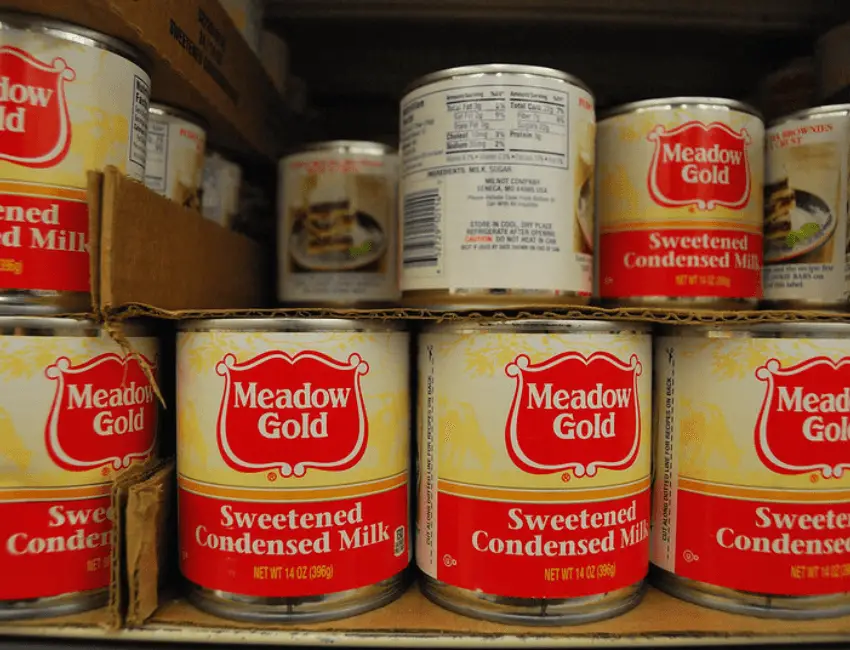Condensed milk is a popular ingredient utilized in numerous desserts and baked goods. The manufacturing process involves eliminating a significant portion of the water content from conventional milk, while introducing sugar. The results is a dense, sugary and velvety consistency.
Despite its widespread use, there is some uncertainty among consumers about whether condensed milk contains lactose, a sugar variety commonly present in milk that many individuals are incapable of digesting.
This article aims to explore the question, “Does condensed milk have lactose?” and clarify any concerns regarding lactose content in condensed milk. Let’s get into the information…
What Is Lactose?
To answer this question, we first need to understand what lactose is and how it affects the human body. Lactose is a natural sugar made up of glucose and galactose, which is naturally present in milk and other dairy products. In order to digest lactose, our bodies need an enzyme called lactase, which breaks down lactose into its simpler sugars so that they can be absorbed by the body.
However, some people are unable to produce enough lactase to digest lactose properly, leading to a condition known as lactose intolerance. Symptoms of lactose intolerance can include bloating, gas, abdominal pain, and diarrhea, and can vary in severity depending on the individual.
Is There Lactose in Condensed Milk?
So, does condensed milk have lactose? The answer is yes, condensed milk does contain lactose. While much of the water content is removed during the production process, the lactose content remains intact. In fact, condensed milk typically contains a higher concentration of lactose than regular milk.
According to the Gastrointestinal and Liver Specialists of Tidewater, sweetened condensed milk contains approximately 26 grams of lactose in 1 cup. Furthermore, UpToDate indicates a higher amount in the range of 31-50 grams per 1 cup. Keep in mind that lactose content can vary from product-to-product.
To put the above numbers into perspective, research has discovered that lactose intolerant people can typically handle up to 12 grams of lactose in one sitting or 18 grams spread out through the day.
This means that individuals who are lactose intolerant should avoid consuming condensed milk or use it sparingly. Since tolerance for lactose varies by person, only you will be able to determine how much is suitable in your diet through trial and error or an elimination diet.
In case you were curious, evaporated milk has similar lactose content compared to condensed milk.
Lactose-Free Condensed Milk
If you can’t have condensed milk because of issue with lactose, the good news is that there is lactose-free condensed milk options. A product to consider is Nestle’s La Lechera Lactose-Free Sweetened Condensed Milk. It is made with milk, sugar, and lactase. The lactase is an enzyme that breaks down the lactose as previously discussed.
Furthermore, you can go completely dairy-free with your condensed milk with alternatives like Nature’s Charm Sweetened Condensed Coconut Milk or Jamaican Choice Sweetened Coconut Condensed Milk.
Lastly, there are numerous recipes online for dairy-free or lactose-free condensed milk. These can be made with minimal ingredients such as lactose-free milk/dairy-free milk, sugar, and salt. They are worth a try if you have time to make your own.
Final Thoughts
In conclusion, condensed milk does contain lactose and should be consumed with caution by individuals with lactose intolerance. It is important to be mindful of the amount of lactose in all dairy products and to explore alternative options if necessary. By staying informed and making smart choices, individuals can continue to enjoy things like delicious desserts and baked goods with dairy while not having to deal with unwanted problems from dairy.
Disclosure: The Dairy Dish is a participant in the Amazon Services LLC Associates Program, an affiliate advertising program designed to provide a way for websites to earn advertising revenues by advertising and linking to Amazon.com.
Image Credit – Freddy Stoeckmann/flickr

